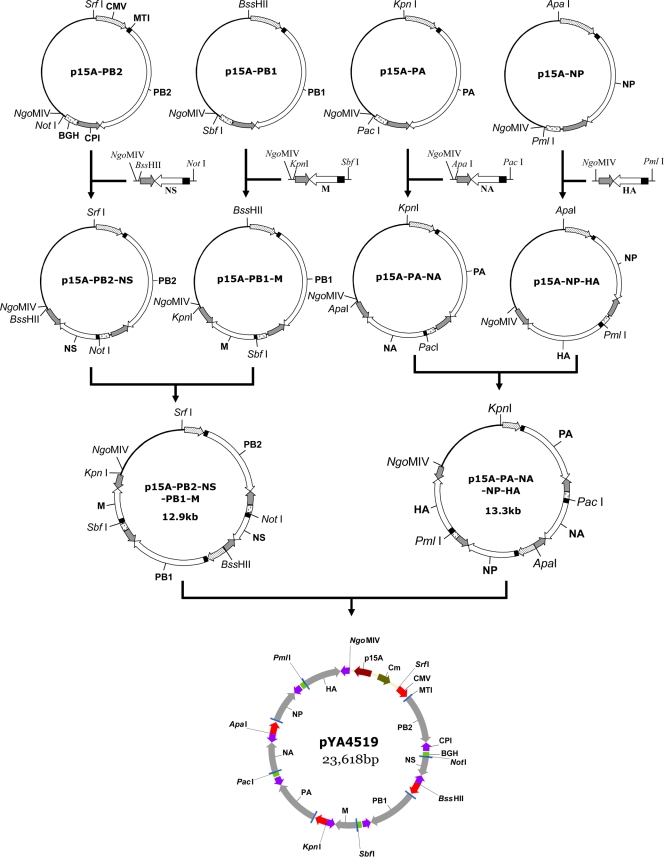FIG. 3.
Stepwise construction of the eight-unit plasmid pYA4519. (A) PB2, PB1, PA, and NP bidirectional cassettes were amplified from pYA4379-derived plasmids, and each cassette was individually cloned into a single p15A-T vector to obtain four one-unit plasmids: p15A-PB2, p15A-PB1, p15A-PA, and p15A-NP. (B) The NS, M, NA, and HA vRNA-transcribing cassettes were amplified from pYA4380-derived plasmids by introducing compatible restriction sites and were each cloned into the one-unit plasmid to obtain four two-unit vectors: p15A-PB2-NS, p15A-PB1-M, p15A-PA-NA, and p15A-NP-HA. (C) Each of the two four-unit plasmids, p15A-PB2-NS-PB1-M and p15A-PA-NA-NP-HA, was constructed by fusing influenza virus cassettes from the two two-unit plasmids shown in panel B. (D) The fragment containing PA, NA, NP, and HA cassettes was excised using KpnI and NgoMIV and ligated into the compatible sites in the four-unit plasmid p15A-PB2-NS-PB1-M to obtain a 23.6-kb-long eight-unit plasmid, pYA4519, to transcribe the whole set of influenza vRNAs via CPI and to synthesize influenza virus RNA polymerase (PB1, PB2, PA) and NP by the CMV promoter. All constructs carry p15A ori. Plasmids are not drawn to scale. p15A-PB1, polymerase B1 cDNA cassette cloned into the p15A-T vector; p15A-PB2, polymerase B2 cDNA cassette cloned into the p15A-T vector; p15A-PA, polymerase A cDNA cassette cloned into the p15A-T vector; p15A-NP, NP cDNA cassette cloned into the p15A-T vector.

